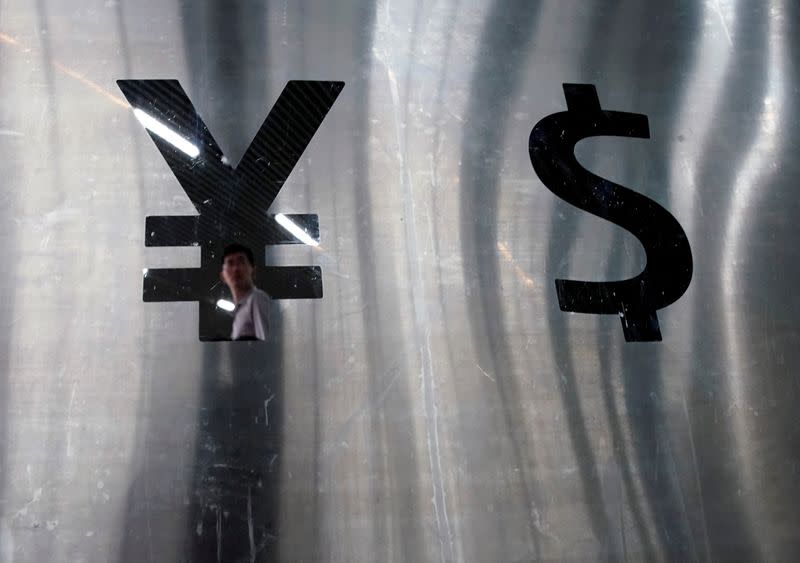Yuan bulls return on trade deal hopes, growth worries cloud rupee's outlook: Reuters poll

By Shriya Ramakrishnan
(Reuters) - Bullish bets on the Chinese yuan scaled a near 10-month high with investors strengthening long positions on most Asian currencies, a Reuters poll showed, as prospects of an imminent Sino-U.S. trade pact encouraged switches into riskier assets.
U.S. President Donald Trump said last week that the 'phase one' deal with China, which will reduce U.S. tariffs in exchange for a boost in Chinese purchases of certain American goods, would be signed on Jan. 15.
Though doubts persist on the details, the deal is seen as a breakthrough in relations between the world's two largest economies after months of tit-for-tat tariffs and fractious negotiations.
Long positions on the Chinese yuan were at their highest since March last year, a poll of 16 respondents showed.
The lift in risk-on sentiment taken from prospects of an end to the U.S.-China trade war outweighed the negative impact of tensions in the Middle East. There had been fears that a U.S. drone attack that killed a top Iranian general in Baghdad last week could lead to a wider conflict, but those fears have begun to subside.
"Given that the Chinese yuan is holding below the 7.0 level against the U.S. dollar, that is offering some measure of support for regional currencies," Han Tan, a market analyst at FXTM said.
Market participants switched to bullish positions on the Malaysian ringgit for the first time in over 5 months and increased long positions on the Singapore dollar.
Sentiment towards the South Korean won also reversed, with positions now turning bullish. The won, Asia's worst performing currency last year, has recently benefited from an improvement in the outlook for prices of memory chips - the country's top export item.
Lingering concerns over an economic slowdown bogged down the Indian rupee, with investors maintaining bearish bets on the currency since mid-August.
India is expected to post its slowest pace of growth in 11 years for the current financial year ending in March, which will likely prompt the government to opt for extra stimulus measures during the annual budget presentation next month.
The country has also been rocked by a wave of demonstrations against a new citizenship law, which at times have turned violent, posing the biggest challenge to Prime Minister Narendra Modi since he took office in 2014.
"Should protests escalate, there could be concerns that the government would be too pre-occupied to tackle the slowdown and investor climate in the economy. INR can be hurt eventually," Fiona Lim, Senior FX Strategist at Maybank, Global Markets Singapore said.
Investors trimmed long positions on the Thai baht. Authorities remain concerned about the strength of the baht after it breached a key level at year-end, driven by hefty current account surpluses and foreign fund inflows.
The Asian currency positioning poll is focused on what analysts and fund managers believe are the current market positions in nine Asian emerging market currencies: the Chinese yuan, South Korean won, Singapore dollar, Indonesian rupiah, Taiwan dollar, Indian rupee, Philippine peso, Malaysian ringgit and the Thai baht.
The poll uses estimates of net long or short positions on a scale of minus 3 to plus 3. A score of plus 3 indicates the market is significantly long U.S. dollars.
The figures include positions held through non-deliverable forwards (NDFs).
(Reporting by Shriya Ramakrishnan in Bengaluru; Editing by Simon Cameron-Moore)

 Yahoo Finance
Yahoo Finance 